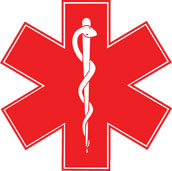ENT

ENT stands for Ear, Nose and Throat. It describes the department which specializes in the diagnosis and treatment of ear, nose, throat, and head and neck disorders. We have expertise of experienced doctors, dynamic assistants in our department. And not only our personnel but the state of the art machines also have we to deliver seamless treatments.
ENT Treatments
- Dizziness / vertigo
- Hearing loss
- Tinnitus
- Nasal allergy / allergic rhinitis
- Nasal polyps (non-cancerous growths)
- Sinusitis
- Pharyngitis
- Swallowing disorder
- Tonsillitis
- Head and neck conditions (eg. parotid disorder)
- Neck lumps
- Thyroid disorder
- Thyroid cancer
Our team of Experts in ENT
| Name | Credentials |
| Prof. (Doctor) A M SAHA | MBBS (CAL), MS (ENT) |
| Dr. AVIK KUMAR JANA | MBBS, MS, MRCS, PHD (USA), FACS (USA) FRSPH (UK), FRSTMH (UK) |
| Dr. SUBHRO GANGULY | MBBS, MS (ENT) |
ENT Facilities
What Is Septoplasty?
The septum is the wall of bone and cartilage that divides your nose into two separate nostrils. A deviated septum occurs when your septum is moved to one side of your nose.
Some people are born with a deviated septum, but it can also be caused by an injury to your nose. Most people with a deviated septum have one nasal passage that’s much smaller than the other. This can cause difficulty breathing. Other symptoms of a deviated septum may include frequent nosebleeds and facial pain. Surgery is the only way to fix a deviated septum.
How is Septoplasty done?
A septoplasty takes anywhere from 30 to 90 minutes to complete, depending on the complexity of the condition. You’ll be under either local or general anesthesia, depending on what you and your doctor decide is best for you.
In a typical procedure, the surgeon makes an incision on one side of your nose to access the septum. They next lift up the mucous membrane, which is the protective covering of the septum. Then the deviated septum is moved into the right position. Any barriers, such as extra pieces of bone or cartilage, are removed. The last step is the repositioning of the mucous membrane.
You may need stitches to hold the septum and membrane in place. However, packing the nose with cotton is sometimes enough to keep them in position.
Tonsillectomy is one of the most common surgeries teens get. But they’re done less often than in the past because large tonsils often shrink on their own over time.
Why Are Tonsillectomies Done in Teen?
Teens usually have a tonsillectomy because:
- Their tonsils are so big they block the airway and make it hard to breathe. Swollen tonsils can make it hard to breathe, especially during sleep. Someone might snore and stop breathing for short periods while asleep when the tonsils get in the way. This is called obstructive sleep apnea. Apnea can make someone miss out on healthy, restful sleep, and even lead to health problems.
- Their tonsils get infected often. A health care provider might recommend removing the tonsils if someone gets a lot of tonsil infections (called tonsillitis). Experts define “a lot” as when a doctor diagnoses the person with at least 7 infections a year, more than 5 infections a year for 2 years in a row, or three infections a year for 3 years.
Why Are Tonsillectomies Done in Adults?
Your tonsils are two clumps of & they’re a part of your immune system that traps germs that get into your body through your mouth or nose.
They can be swollen or become infected. If you’ve ever had strep throat, you likely had an infection in your tonsils. Getting infections often can cause breathing problems or sore throats that don’t go away.
Chronic throat infection is the most common reason adults have their tonsils out. Adults who have the surgery typically have had several sore throats over the past 1 to 3 years or have had a sore throat and swollen tonsils caused by infection for at least 3 months. Your sore throat might get better with antibiotics, but it comes back as soon as you’re done with the treatment.
How Is Surgery Done?
The procedure takes about 30 to 45 minutes. You’ll be given general anesthesia, so you’ll be asleep and pain-free during the surgery. The surgeon will use a small knife called a scalpel to gently remove your tonsils.
You may also have your adenoids taken out at the same time. They’re also part of your immune system, and they sit close to your tonsils, up behind your nose and the roof of your mouth. This part of the surgery is called an adenoidectomy.
After surgery, your health care team will watch vital signs such as heart rate and breathing and check to make sure nothing goes wrong. If you’re doing well after a few hours, you’ll likely be sent home to recover. But if you have a lot of bleeding from the wound, severe vomiting, trouble breathing, or other complication, you’ll probably stay in the hospital overnight.
What is thyroidectomy?
A thyroidectomy is an operation that involves the surgical removal of all or part of the thyroid gland. General, endocrine or head and neck surgeons often perform a thyroidectomy when a patient has thyroid cancer or some other condition of the thyroid gland (such as hyperthyroidism) or goiter
Why and which type of Thyroidectomy needs to be done
Your doctor may recommend that you consider thyroid surgery for 4 main reasons:
- You have a nodule that might be thyroid cancer.
- You have a diagnosis of thyroid cancer.
- You have a nodule or goiter that is causing local symptoms – compression of the trachea, difficulty swallowing or a visible or unsightly mass.
- You have a nodule or goiter that is causing symptoms due to the production and release of excess thyroid hormone – either a toxic nodule, a toxic multinodular goiter or Graves’ disease.
The extent of your thyroid surgery should be discussed by you and your thyroid surgeon and can generally be classified as a partial thyroidectomy or a total thyroidectomy. Removal of part of the thyroid can be classified as:
- An open thyroid biopsy – a rarely used operation where a nodule is excised directly;
- A hemi-thyroidectomy or thyroid lobectomy – where one lobe (one half) of the thyroid is removed;
- An isthmusectomy – removal of just the bridge of thyroid tissue between the two lobes; used specifically for small tumors that are located in the isthmus.
- Finally, a total or near-total thyroidectomy is removal of all or most of the thyroid tissue.
The recommendation as to the extent of thyroid surgery will be determined by the reason for the surgery. For instance, a nodule confined to one side of the thyroid may be treated with a hemithyroidectomy. If you are being evaluated for a large bilateral goiter or a large thyroid cancer, then you will probably have a recommendation for a total thyroidectomy. However, the extent of surgery is both a complex medical decision as well as a complex personal decision and should be made in conjunction with your endocrinologist and surgeon.








